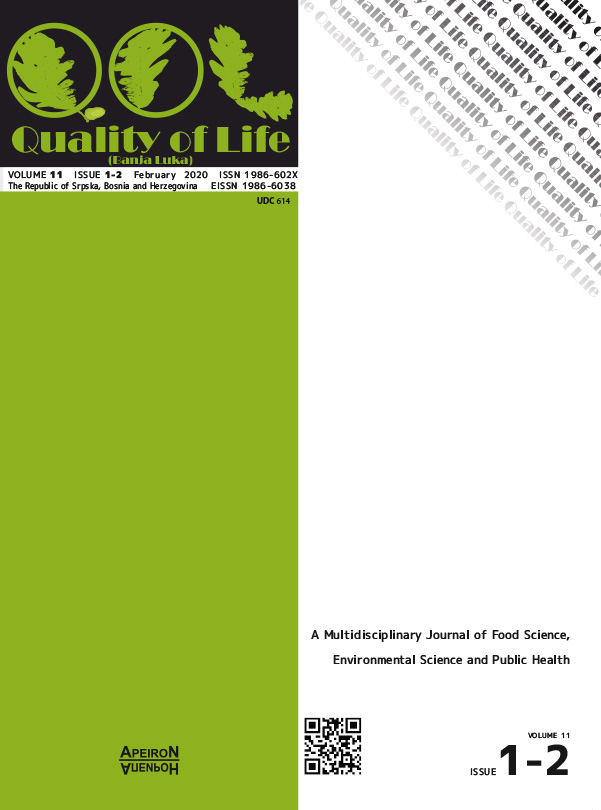Analysis of Contents of Calcium, Magnesium and Total Hardness in Water for Pharmaceutical Use
DOI:
https://doi.org/10.7251/QOL2001025DJAbstract
Water is one of the most frequently used raw materials in pharmaceutical industry. Water for pharmaceutical purposes includes the two primary water types: purified water and water for injection. Drinking water used for obtaining purified water is not official in pharmacopoeia. Depending on quality prescribed for a certain product preparation, various water types and procedures have been used to prepare pharmaceutical industry water. Possible ways to obtain water for pharmaceutical purposes are: reverse osmosis, demineralization, electrodeionization, ultrafiltration, distillation. Reasons for the widespread use of water lie in the facts that it is capable of dissolving a great number of therapeutic substances, compatible with a large number of substances, appropriate to be used from a physiological aspect given that it is an integral part of the cell and the major component of body fluids and whenever the drug is administered in the form of an aqueous solution, reabsorption is rapid and complete, it also has suitable physical-chemical properties. In this study, analysis results of 15 samples of water were obtained using pharmacopoeial methods for pharmaceutical purposes. Results showed that 86.6% of water samples were accurate and 13.3% did not have appropriate calcium content, magnesium content and total hardness values.Downloads
Published
2020-03-16
Issue
Section
Чланци
